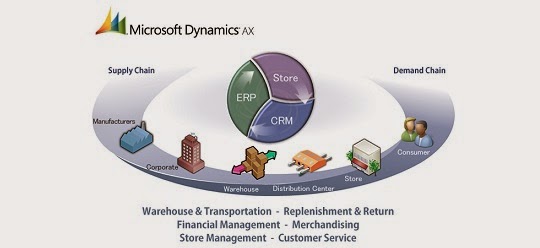https://bestmicrosoftdynamicsaxonlinetraining.blogspot.com/2015/05/microsoft-dynamics-ax-history.html
Microsoft Dynamics AX was
originally developed as a collaboration between IBM and Danish Damgaard Data as
IBM Axapta. Axapta was initially released in March 1998 in the Danish and U.S.
markets. IBM returned all rights in the product to Damgaard Data shortly after
the release of Version 1.5 before Damgaard Data was merged with Navision
Software A/S in 2000. The combined company, initially Navision Damgaard, later
Navision A/S, was acquired by Microsoft in July 2002.
In September 2011, Microsoft
announced the release of new version AX 2012. Today, it is available and
supported in more than 30 countries and 25 languages.
Development Centers
MDCC or Microsoft Development
Center Copenhagen was once the primary development center for Dynamics AX. MDCC
is located in Vedbak and also houses Microsoft Dynamics NAV and several other
Microsoft Dynamics family products. MDCC employs about 900 people of around 40
different nationalities.
In addition to MDCC, AX
development is now performed in two additional sites in Bellevue, Washington
and Fargo, North Dakota.
Features of Microsoft Dynamics AX
- Microsoft Dynamics AX contains 19
core modules
- Traditional core (since Axapta
2.5)
- General Ledger, composed of
ledger, sales tax, currency and fixed assets features
- Bank Management, where cash is
received and paid out
- Customer Relationship Management
(CRM), where Business Relations (customers, vendors, and leads) are contacted
and maintained
- Accounts Receivable, where orders
are entered, shipped and invoiced
- Accounts Payable, where purchase
orders are issued and goods received into inventory
- Inventory Management, where
Inventory is valued and managed
- Master Planning (resources),
where purchase and production planning takes place
- Production, where bill of
materials is defined and manufacturing is tracked
- Product Builder, where product
models are created and maintained
- Human Resources, where employee
information is kept
- Project Accounting, where
projects are created and tracked primarily from an accounting perspective
- Basic, where data configuration
is performed
- Administration Module, where
system configuration is performed







